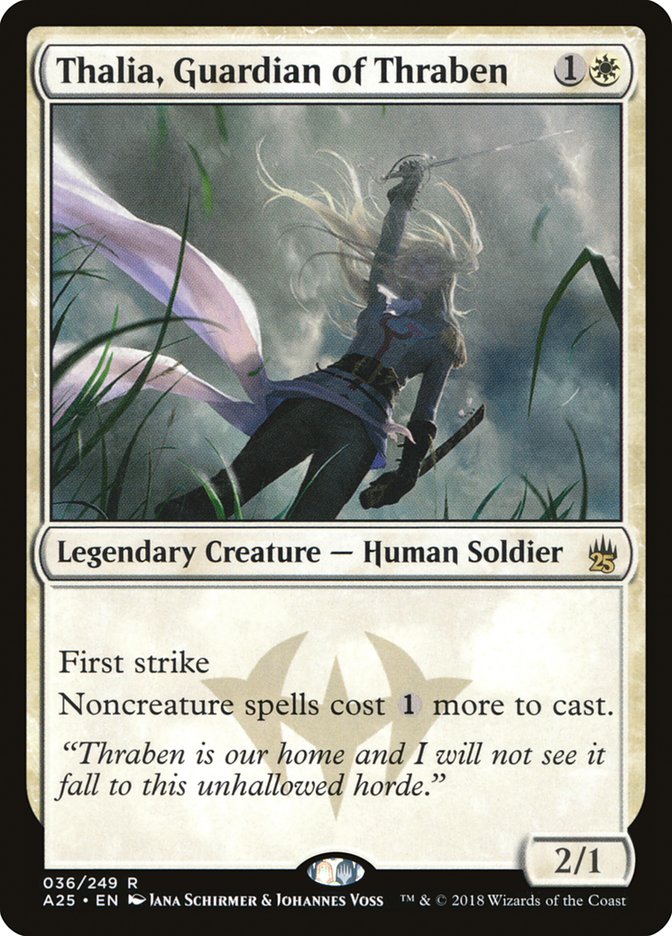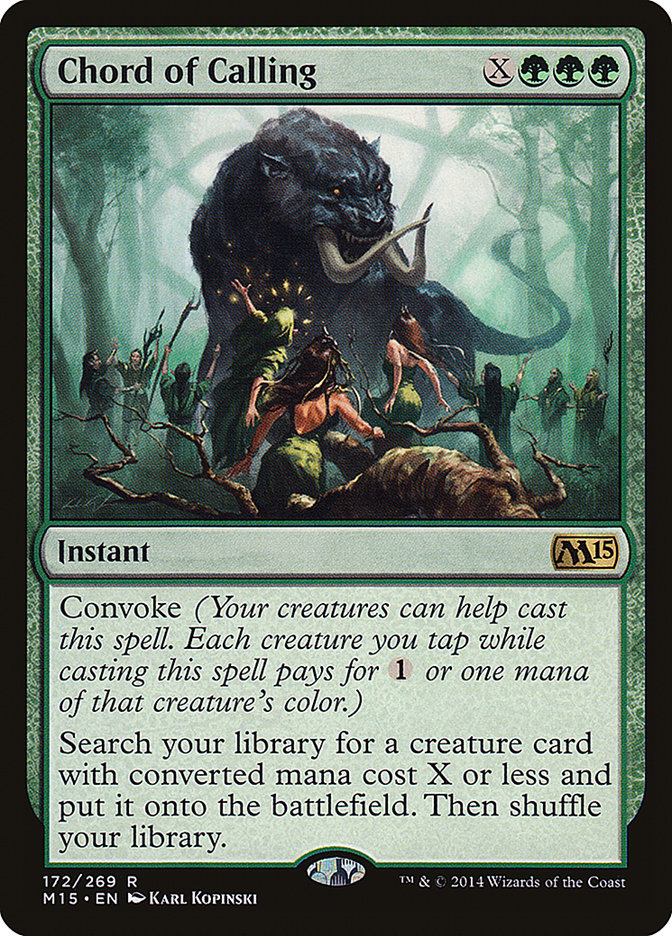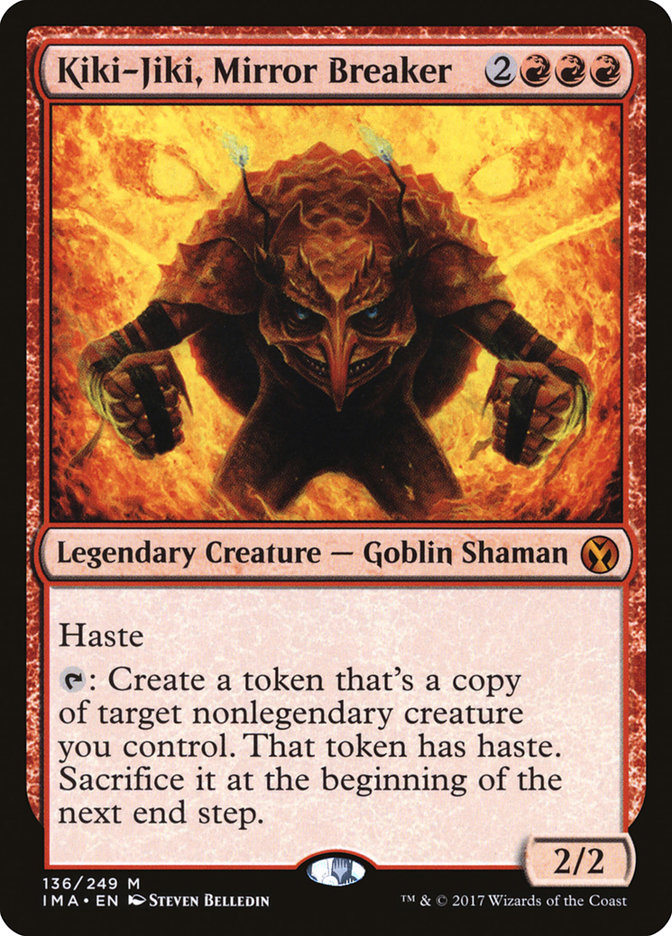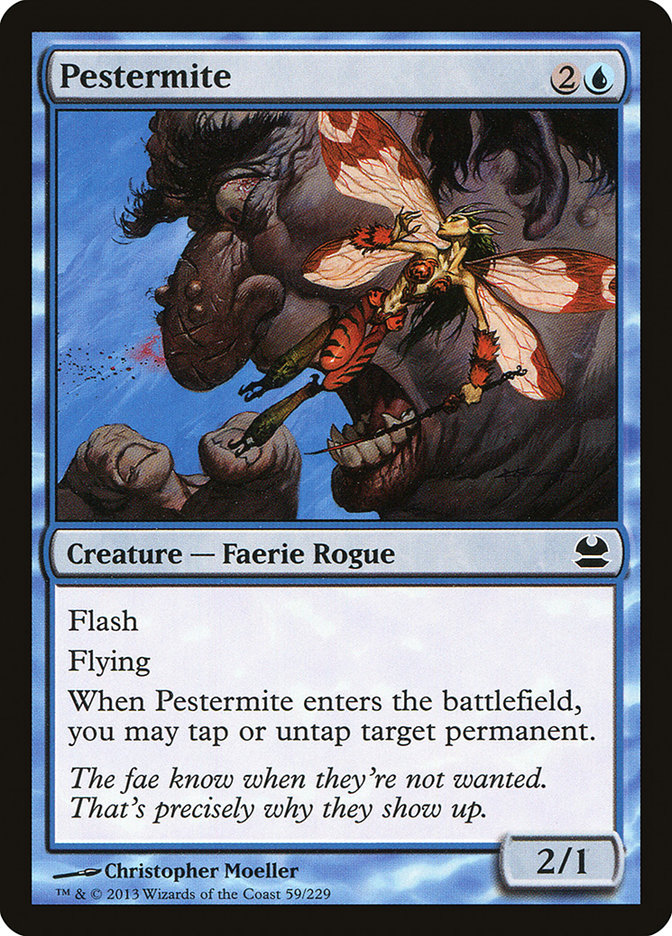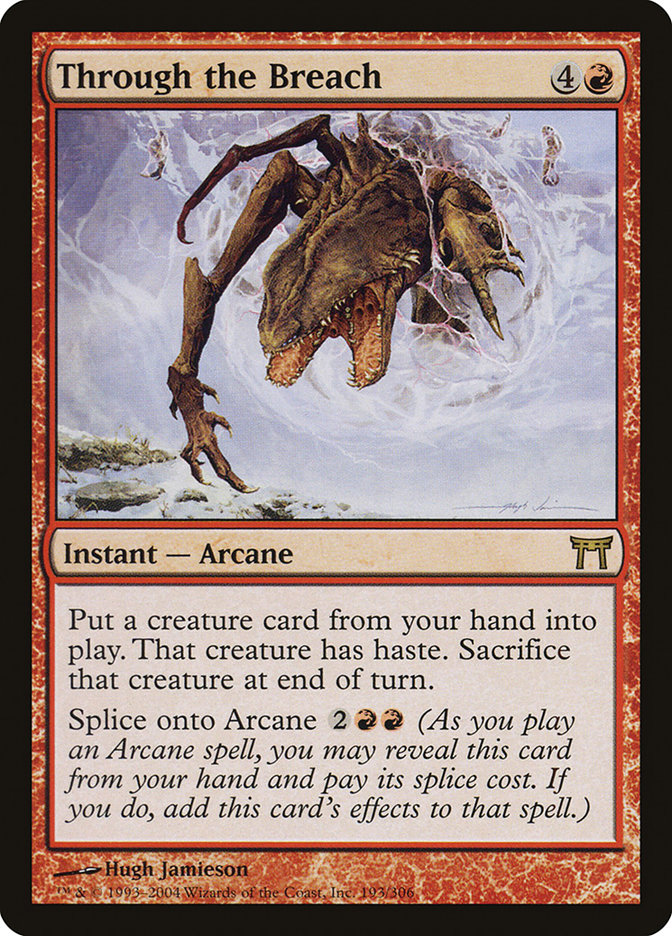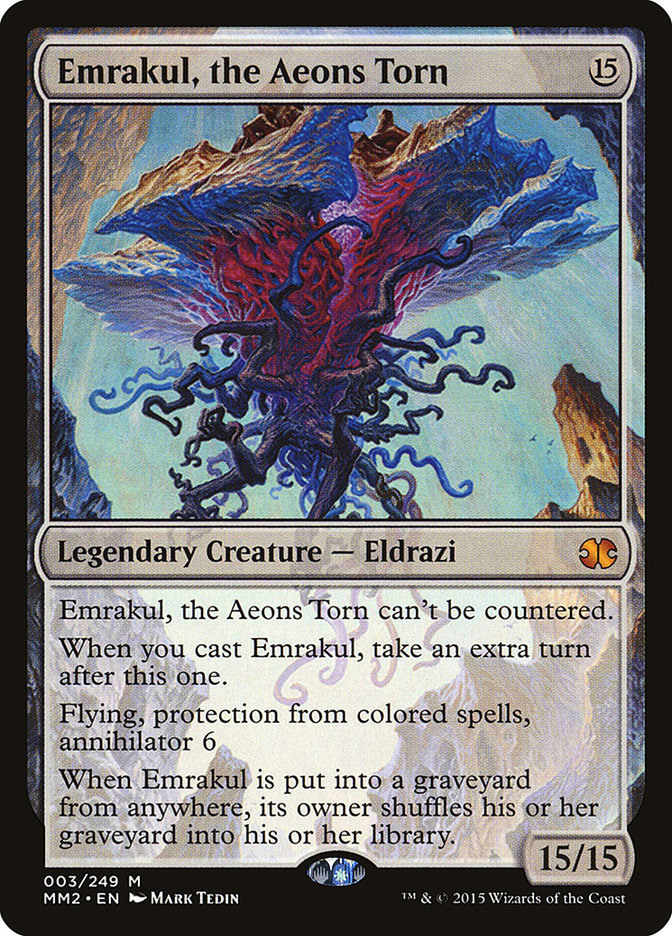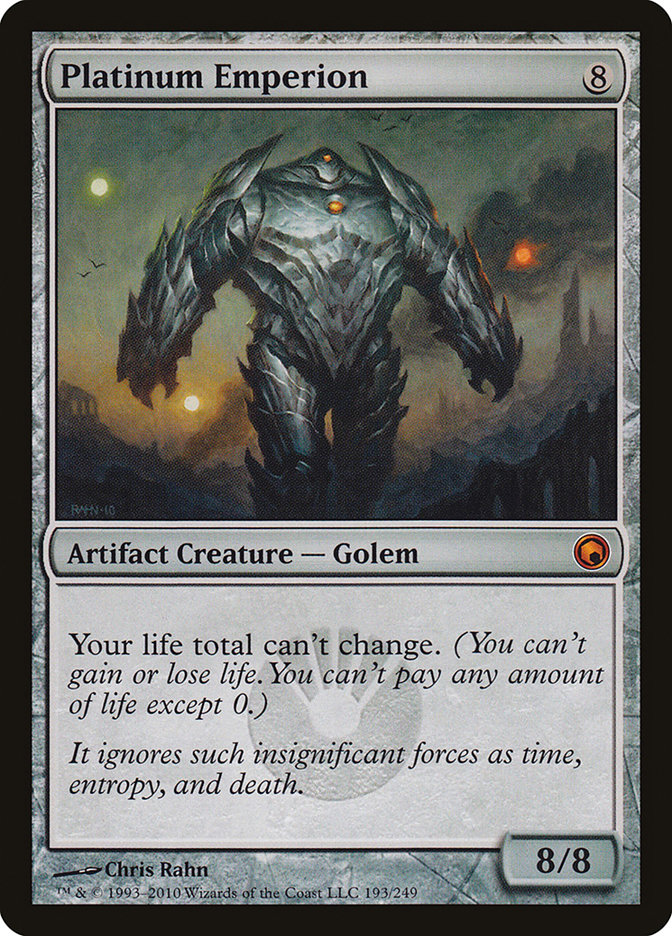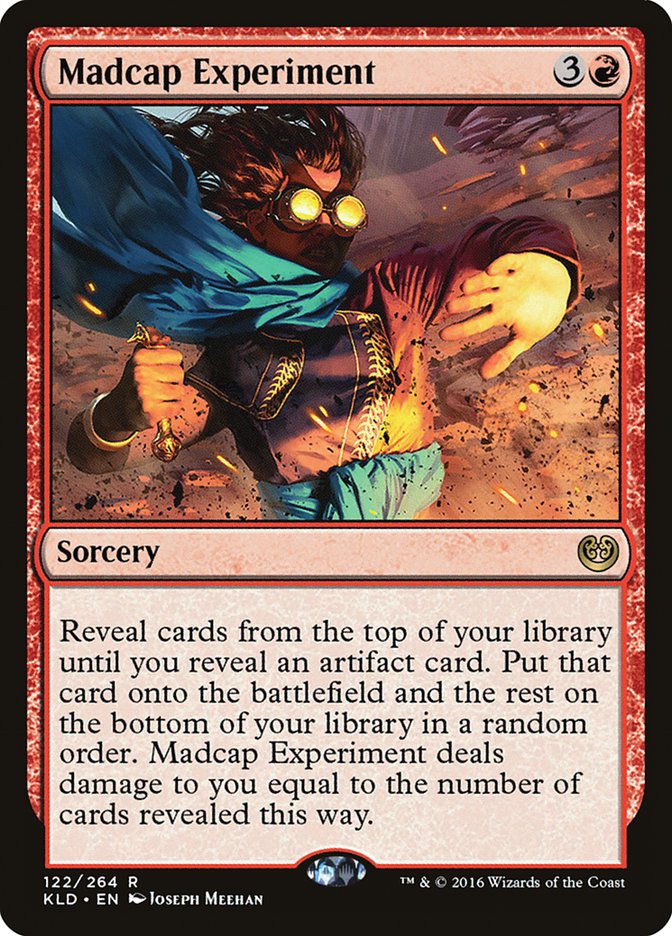With the SCG Tour committing heavily to Modern in recent months, I’ve been
playing the format more than ever, giving me time to explore several
different decks and get a better sense of how the format operates at a base
level.
From that experience, I’ve developed a few strong opinions about how
various Modern decks should be built, opinions that are opposed with the
trends in decklists I see as I scour through MTGGoldfish looking for the
latest brew to feature as a Daily Digest.
Without further ado, here are some deckbuilding trends in Modern that need
to be reversed:
Trimming Thalia, Guardian of Thraben in Humans
I’ve been through this before. Back in 2012, I started playing Maverick in
Legacy right after Thalia, Guardian of Thraben was printed. It was a
three-of in nearly every list, and I only played three for a couple months
until I realized that it was undoubtedly one of the best cards in the deck
and I wanted to draw it early and often. I added the fourth and never
looked back, as did many others.
I thought the hive mind had learned its lesson as Collins Mullen’s original
Humans list came with the full four copies of Thalia, and most subsequent
lists copied that. I gleefully sleeved up the set I’ve owned for six years
as it’s one of my favorite cards of all time. But some time recently, as
the deck has risen in popularity to the top deck in the metagame, I’ve seen
several lists shamelessly shave a copy.
There’s a couple factors at play here that I can see. First is Humans
doesn’t have a lot of modularity in the main deck. Nearly every list is
within a couple cards of every other. You’d think that with access to all
five colors you’d see more variety, but the reality is once you have that
wide a range, you have access to enough of the most powerful options to
fill out a deck. Magic is a place where restriction breeds creativity,
which is why Legacy tends to be the most homogenous format.
The low number of flex spots forces players to search harder for room to
try out their new tech. (read: make their deck worse) Thalia has been the
unfortunate target in this quixotic endeavor.
Second, Thalia has the downside of being legendary, so extra copies often
languish in your hand. You often find legendary creatures played as
three-ofs for this reason, but when the card is powerful and much more
effective when played early like Thalia you need to accept the downside of
multiple copies and play four. As is, that downside is often mitigated by
the fact that an early Thalia eats a removal spell quite often, making the
second copy a boon.
There’s some merit to trimming a copy if the metagame moves hard towards
creature-heavy decks like the mirror and Affinity, but Modern has such a
diverse field that metagame variables are naturally diminished in
importance. Humans doing so well should also bring a resurgence in control
decks, against which Thalia is among your most important cards.
I’m sure there are metagames where trimming a Thalia is correct, but those
metagames are few and far between. Thalia is the best hate bear ever
printed, seeing significant play in every format in which it’s legal.
Moreover, the symmetry of its ability is broken more readily by Humans than
any other deck in Magic’s history. If you’re trimming one, you better have
a much stronger reason than “It’s a legend.”
Pairing Liliana of the Veil with Snapcaster Mage/Cryptic
Command
Snapcaster Mage. Liliana of the Veil. Two of the most iconic cards in all
of Modern. They’ve been format staples from the beginning of the format and
will continue to be unless something drastic happens.
But rarely to they belong in the same deck.
Powerful cards have a way of looking good together even if there is some
degree of negative synergy between them simply because they are powerful.
But the reality is Liliana and Snapcaster Mage are maximized in different
ways. On a fundamental level, Liliana of the Veil is the kind of card that
limits the total resources available in a game. It inhibits both players
from assembling any kind of synergies and thus pairs well with the most
efficient threats and disruption in the game, aka Tarmogoyf and Inquisition
of Kozilek.
Snapcaster Mage, however, plays best in games that are resource-rich,
because such games give the card the most options. Flashing back a Cryptic
Command with Snapcaster Mage is virtually impossible in games where a
Liliana of the Veil sticks early. You end up mostly limited to targeting
one mana spells like Serum Visions and Lightning Bolt. It’s no surprise
that Liliana of the Veil is one of Jund’s best cards in control matchups.
When you pair the two, especially in conjunction with cheap cantrips,
Liliana’s +1 ability is rarely asymmetrical, and you end up in scenarios
where even trading a card for a card is a liability because you want to
make a land drop and hold up Snapcaster Mage as a reactive play.
Additionally, Liliana of the Veil plays best with proactive disruption,
i.e. discard spells and disruptive creatures whereas Snapcaster Mage plays
best with reactive disruption, i.e. counterspells. That isn’t to say that
you can’t pair Snapcaster Mage with Inquisition of Kozilek; Grixis Death’s
Shadow did as much for the better part of a year, but that wasn’t a deck
that relied on counterspells and simply had Snapcaster Mage as a role
player that plays well with all the cheap spells in the deck rather than a
central card in the deck. It’s also notable that Liliana of the Veil, which
was initially a main deck card in the deck, eventually became a sideboard
card at best.
I often see this pairing in ill-conceived Sultai or Esper Midrange decks,
which try to be Jund-esque piles of powerful cards but don’t mesh nearly as
well as Jund’s cards do. These decks would be much better served by
focusing on playing Liliana, the Last Hope, which is a card that increases
your available resources. Its -2 ability plays well with Snapcaster Mage
and other graveyard-oriented cards like Lingering Souls, and its +1 plays
well against Humans and other go wide strategies that tend to match up well
against decks that rely on spot removal, as these three-color midrange
decks do.
Excessive Silver Bullets with Chord of Calling
One of the common complaints about Modern is how difficult it is to build a
fifteen-card sideboard that can adequately prepare you for the wide range
of decks you’re bound to face over the course of a large tournament. If you
come with a sideboard that ignores a few archetypes in order to prepare for
the most popular decks you may run into your now bad matchups and pay the
price, but if you spread yourself thin trying to cover everything then
round after round your deck isn’t improving in games 2 and 3 as much as
your opponents’. It’s a catch 22 that drives the format.
Efficient tutors are a way to dodge this quandary entirely, allowing you to
include singleton silver bullets for all the different werewolves that
exist across the great wilderness that is Modern while also having
consistent access to them after sideboarding. On the surface that seems
like a dream scenario, but it falls apart for two reasons:
First, by virtue of the restriction played on Chord of Calling, you’re
limiting your bullets to only be creatures, thereby often choosing subpar
cards so they fit in the toolbox. There are several creatures in Modern
that are great tutor targets, like Kataki, War’s Wage or Eidolon of
Rhetoric, but when you start trying to include incredibly narrow cards like
Tajuru Preserver, you’re going overboard and neglecting the powerful
sideboard cards that help to define Modern.
Decks in this format are good enough that they aren’t undone by half
measures. You need to commit to the strongest sideboard cards possible to
give yourself the best chance of winning and thus a sideboard of silver
bullets rarely accomplishes that goal.
Second, Chord of Calling, in particular, gets a lot worse in sideboard
games. By virtue of its cost, it’s universally found in decks filled with
creatures, so most of your opponents are going to side in plenty of removal
in an attempt to keep your battlefield in check and prevent the kinds of
synergies that Chord of Calling is meant to assemble. As a result, Chord of
Calling becomes a liable to rot in your hand should your opponent succeed
to any great degree, and if they don’t you’re likely in a winning position
anyway.
You’d be better served in any interactive matchup by shifting plans to make
your deck more resilient to removal and rely on Chord of Calling only
against non-interactive decks where you can flood the battlefield with
creatures and tutor for a card that KOs their strategy as quickly as
possible.
For example, take a look at my G/W Elves sideboard from last weekend:
Most of the response I’ve seen from the list is about the presence of
Boreal Druid (good) and Marwyn, the Nurterer (mediocre), but I thought the
most innovative part of the deck was in limiting the sideboard to only
three creatures. Kataki and Eidolon of Rhetoric are game-winning cards
while Reclamation Sage provides a necessary answer to problematic cards
like Worship and Ensnaring Bridge. Outside of those, none of the other
common sideboard creatures merited inclusion, and I filled out my list with
powerful spells like Rest in Peace, Stony Silence, and Lead the Stampede.
You often find anti-sweeper creatures in Burrenton Forge-Tender and
Selfless Spirit here but in my experience, the decks with sweepers will
have enough removal to prevent you from applying enough pressure to force
the sweeper while also having the mana necessary to Chord for the answer.
There will be times where more creatures are necessary and you should of
course be looking at all the available options when building your
sideboard, but it’s foolish to pigeonhole yourself into playing sub-optimal
cards because of a tutor engine. Evaluate the cards on their own merits
before wasting a sideboard slot that could go to a more powerful card that
may not show up as often but will be more effective on the balance.
Combo Finishes in Blue Moon
There are plenty of combo finishes available to Blue Moon pilots. The most
common is Through the Breach and Emrakul, the Aeons Torn. Then there’s the
poor man’s Splinter Twin in Kiki-Jiki, Mirror Breaker and Deceiver
Exarch/Pestermite. Finally, you can play Madcap Experiment and Platinum
Emperion, which many other lists incorporate into the sideboard.
The logic behind their inclusion makes sense. Control decks in Modern
struggle to compete because the variety of threats in the format is nearly
impossible to cover in a scant 75 cards, so having something proactive to
work toward that can close the game out once you’ve rebuffed your opponent
on the opening turns ensures that they won’t be able to topdeck their way
back into the game.
The problem is that these combos are simply not powerful enough for what
they take away from the rest of the deck. Kiki-Jiki, Mirror Breaker is
incredibly difficult to cast in a deck that also wants access to Cryptic
Command and makes the combo vulnerable to Lightning Bolt whereas Splinter
Twin and Deceiver Exarch conveniently dodged the most common removal spell
in the format. Through the Breach + Emrakul is easier to cast but doesn’t
actually end the game, especially if you fall far behind on the battlefield
because your hand was clogged with do nothing combo pieces in the early
stages of the game.
As for Platinum Emperion. Having my combo finish undone by a Reflector Mage
or removal spell is not something I’m interested in and devoting six
sideboard slots to crush Burn is a fool’s errand.
Blood Moon can help limit the range of opposing interaction for your combos
and give you time to set them up, but that effect benefits a straight
control build just as much so it’s not a compelling argument in favor of a
combo. But the argument in favor of excluding them is indeed compelling.
Each of these combos takes up at least six slots in your deck, if not more.
For a fair version of the deck you only use a few of those slots for win
conditions, and those cards are effective in other ways. Jace, the Mind
Sculptor can affect the battlefield and generate card advantage. Vendilion
Clique is a great disruption element against combo and control decks while
easily trading in combat against aggressive decks. Pia and Kiran Nalaar is
excellent against Affinity and other small creature decks.
And on top of that, you get a few extra slots to play with and shore up
some weaknesses. Maybe a main deck Roast to answer Tarmogoyf and Gurmag
Angler or an extra counterspell for mirrors. Every percentage point matters
and in a deck with plenty of card selection a single card will come up
quite often, so deck space is at a premium. I’m as sympathetic as anyone to
playing powerful combos, but in this case, I can’t condone it.
Am I saying that my opinions on these decisions are 100% correct in every
scenario? No. But I would place these as the default options, thereby
placing the onus on the person deviating from them to justify their
decision. There are always going to be weeks where the metagame is skewed
in a way that going in another direction is correct. But having a proper
baseline from which to make those decisions is important, because otherwise
you’ll be bogged down in tons of small decisions every week.
Despite the bad reputation Modern has garnered for being high variance with
plenty of matchups functioning as two ships passing in the night, the
nature of the format makes deckbuilding decisions more important since you
won’t have as much of an ability to tactically maneuver around any mistakes
you make in tuning your 75. We often equate play skill with in-game
decision making but showing up with a well-built list is just as important,
so make sure you can justify every decision you make when registering a
deck.


